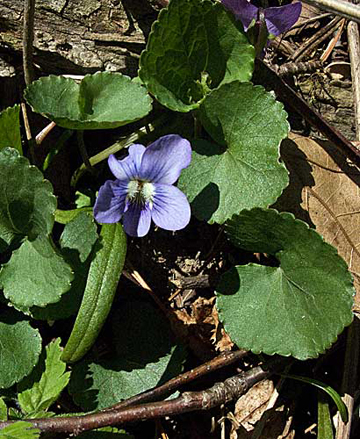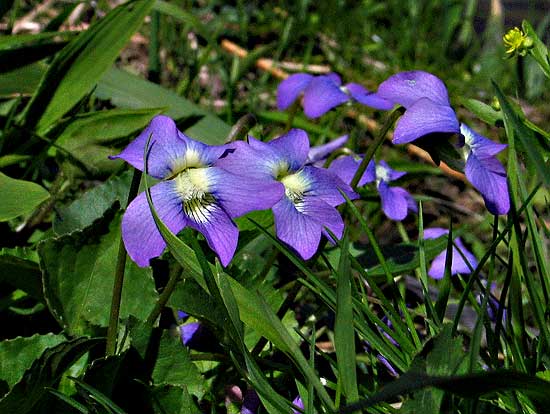
In the older literature this common, widespread species is referred to by the scientific name Viola papilionacea. Its current scientific name was previously listed as a separate species, Woolly Blue Violet or Downy Blue Violet, now considered to be a hairy variety of the Common Blue Violet. Broad-leaved Wood Violet (Viola latiuscula) and Northern Blue Violet (Viola septentrionalis), previously considered to be separate species, are now also considered to be synonyms of the Common Blue Violet.
Distribution: Throughout eastern North America.
Habitat: Common Blue Violet is found in a wide variety of habitats including forest, lawns, meadows, fields, and roadsides.
Flowering period: March to June.
Similar Species: Common Blue Violet can be very difficult to separate from Sand Violet. Sand Violet has a more triangular leaf with a distinctly pointed apex. The lower three petals of Sand Violet are always bearded, but the lower petal is only rarely bearded in Sand Violet.
Comments: Common Blue Violet is the most widespread, common, and habitat non-specific of the eastern violets. The species is considered a lawn weed by some, but is beautiful in the spring. We are happy to have it flourishing in our lawn.
 Common Blue Violet
Common Blue Violet